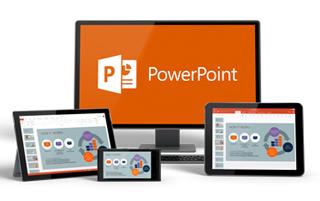The Art of Contextual Presenting:
Tailoring Your Message for Maximum Impact
The world has changed…
In today’s fast-paced world, the ability to deliver a powerful and engaging presentation is a crucial skill. But beyond crafting eye-catching slides and rehearsing your speech, there’s a deeper layer that often goes unnoticed—contextual presenting. This approach ensures that your presentation is not just informative but also resonates with your specific audience in a meaningful way.

What is Contextual Presenting?
Contextual presenting involves tailoring your presentation to the specific needs, interests, and expectations of your audience. It’s about understanding the context in which your presentation will be received and adjusting your content, tone, and delivery to maximize its impact.
Unlike a one-size-fits-all approach, contextual presenting considers factors such as the audience’s background, the setting, and the purpose of the presentation. It’s about making your message relevant, relatable, and compelling.
Why Context Matters
Audience Engagement: When you tailor your presentation to your audience’s specific needs and interests, you naturally increase their engagement. People are more likely to pay attention and retain information that feels directly relevant to them.
Improved Communication: Contextual presenting helps you communicate more effectively. By aligning your message with the audience’s level of knowledge and expectations, you reduce misunderstandings and ensure your key points are clearly understood.
Increased Persuasion: Whether you’re trying to persuade, inform, or inspire, understanding the context allows you to craft a message that resonates deeply with your audience, increasing the likelihood of achieving your desired outcome.
Key Elements of Contextual Presenting
Know Your Audience
Research the Audience: Before creating your presentation, take the time to understand who your audience is. What is their background? What are their interests, challenges, and expectations? This information will guide your content and delivery.
Segment Your Audience: If you’re presenting to a diverse group, consider segmenting your audience into subgroups with similar characteristics. This allows you to address each group’s specific needs more effectively.
Customize Your Content
Align with Audience Needs: Tailor your content to address the specific needs and pain points of your audience. Focus on the information that is most relevant to them and cut out anything that doesn’t add value.
Use Relevant Examples: Incorporate examples, case studies, or stories that resonate with your audience’s experiences. This makes your message more relatable and easier to understand.
Adapt Your Language and Tone
Match the Audience’s Language: Use terminology and language that your audience is familiar with. Avoid jargon or technical terms that may confuse them unless they are well-versed in those areas.
Adjust Your Tone: Consider the formality of the setting and the audience’s expectations. A more casual tone may be appropriate for a creative team, while a formal tone might be better suited for a board meeting.
Consider the Setting
Adapt to the Environment: The physical or virtual setting of your presentation can influence how your message is received. For example, a large conference room might require more visual aids, while a virtual presentation might benefit from interactive elements.
Time Constraints: Be mindful of the time available for your presentation. Tailor your content to fit within the allotted time, focusing on key points and allowing time for questions or discussion.
Engage with Interaction
Ask Questions: Encourage audience participation by asking questions or inviting feedback. This not only engages the audience but also provides you with real-time insights into their thoughts and concerns.
Use Interactive Tools: In virtual settings, use polls, quizzes, or breakout sessions to keep the audience engaged and ensure they are following along. Also consider using SECTION ZOOM in PowerPoint to make your presentation interactive.
Be Flexible
Adapt on the Fly: Even with the best preparation, things don’t always go as planned. Be ready to adapt your presentation in response to audience reactions or unforeseen changes in the setting.
Respond to Feedback: Pay attention to audience cues and feedback during your presentation. If you notice confusion or disengagement, adjust your delivery or clarify points as needed.
The Benefits of Contextual Presenting
Stronger Connection with Your Audience: By considering the context, you create a presentation that feels personal and relevant, helping you build a stronger connection with your audience.
Enhanced Credibility: A well-tailored presentation demonstrates that you understand your audience and their needs, which can significantly boost your credibility and authority on the subject.
Better Outcomes: Whether your goal is to persuade, educate, or inspire, contextual presenting increases the likelihood of achieving your objectives by delivering a message that truly resonates with your audience.
Conclusion
Contextual presenting is more than just a strategy; it’s an art. It requires a deep understanding of your audience, the ability to adapt, and the foresight to anticipate how your message will be received. By mastering contextual presenting, you can transform your presentations from generic and forgettable to targeted and impactful, ensuring that your message not only reaches your audience but leaves a lasting impression.
Hi I’m Johnny from Audiencealive.
We hope you’ve enjoyed this overview and that it impacts on your next presentation. If you feel that you’d like some help then of course, we are here to do so. At AudienceAlive we use only native animation effects and graphics created in PowerPoint to ensure our clients have the maximum possible flexibility with the slides. We can work from a storyboard, text files, or existing presentation. We can design a custom template that you can then populate, or we can produce the entire presentation for you from start to finish. We can also help with advice on delivery and advanced PowerPoint training via our online training courses or in person training.
Johnny.
Online Presentation Skills Training

Start a Project
Our Work
UK:+4420 3286 8561
USA:+1 718 521 4826
UAE:+971 4 3268535
Email: sales@audiencealive.com
